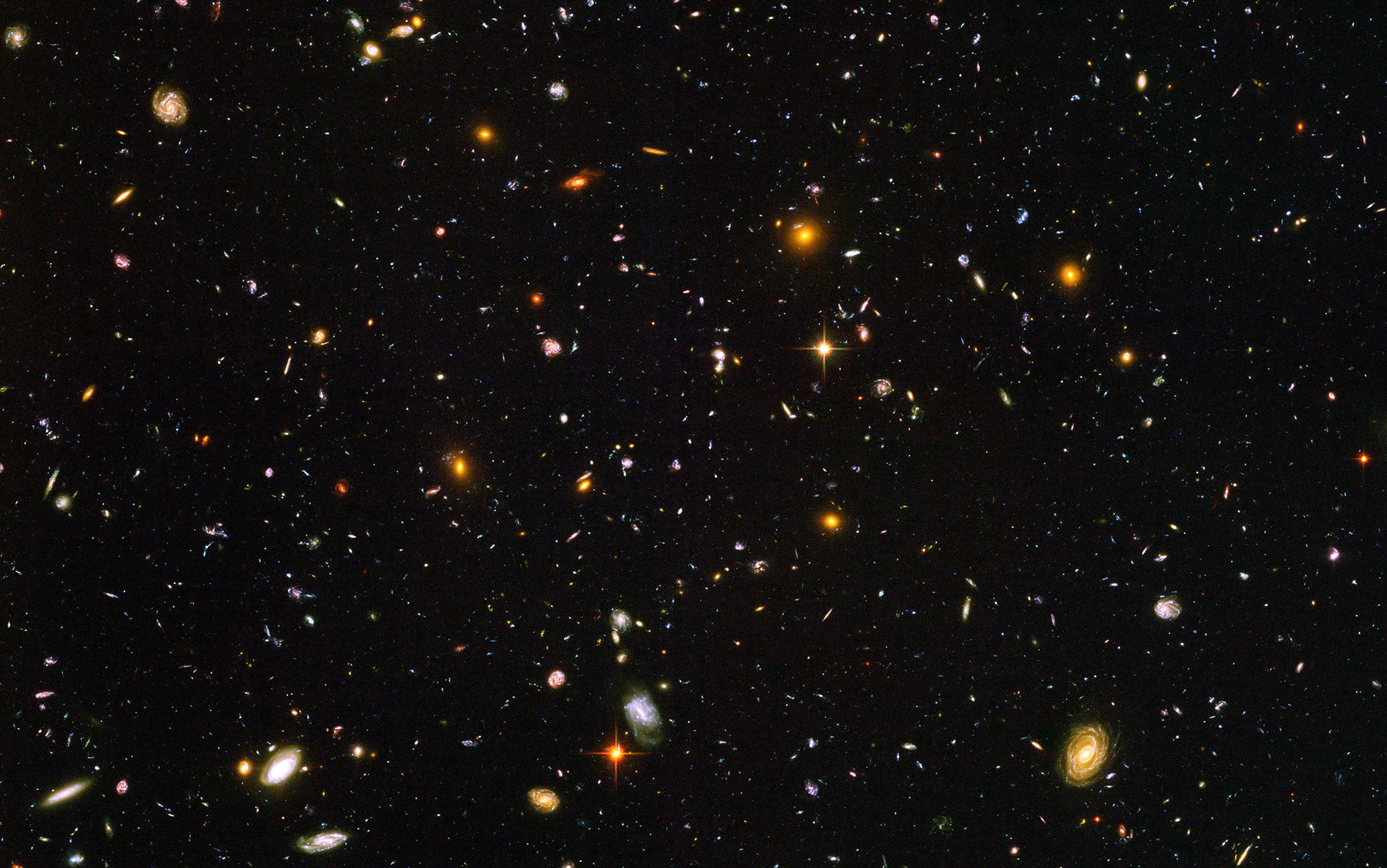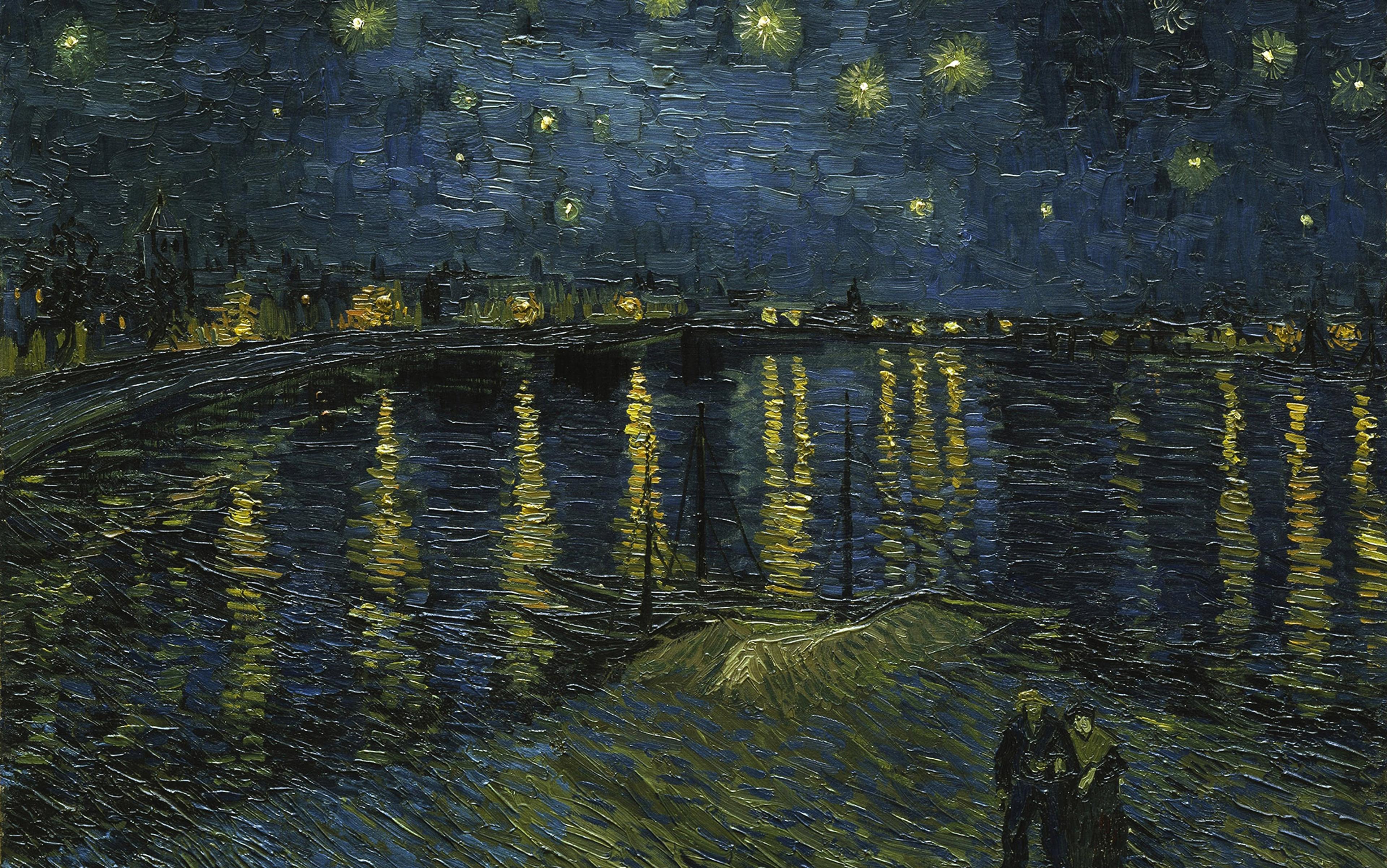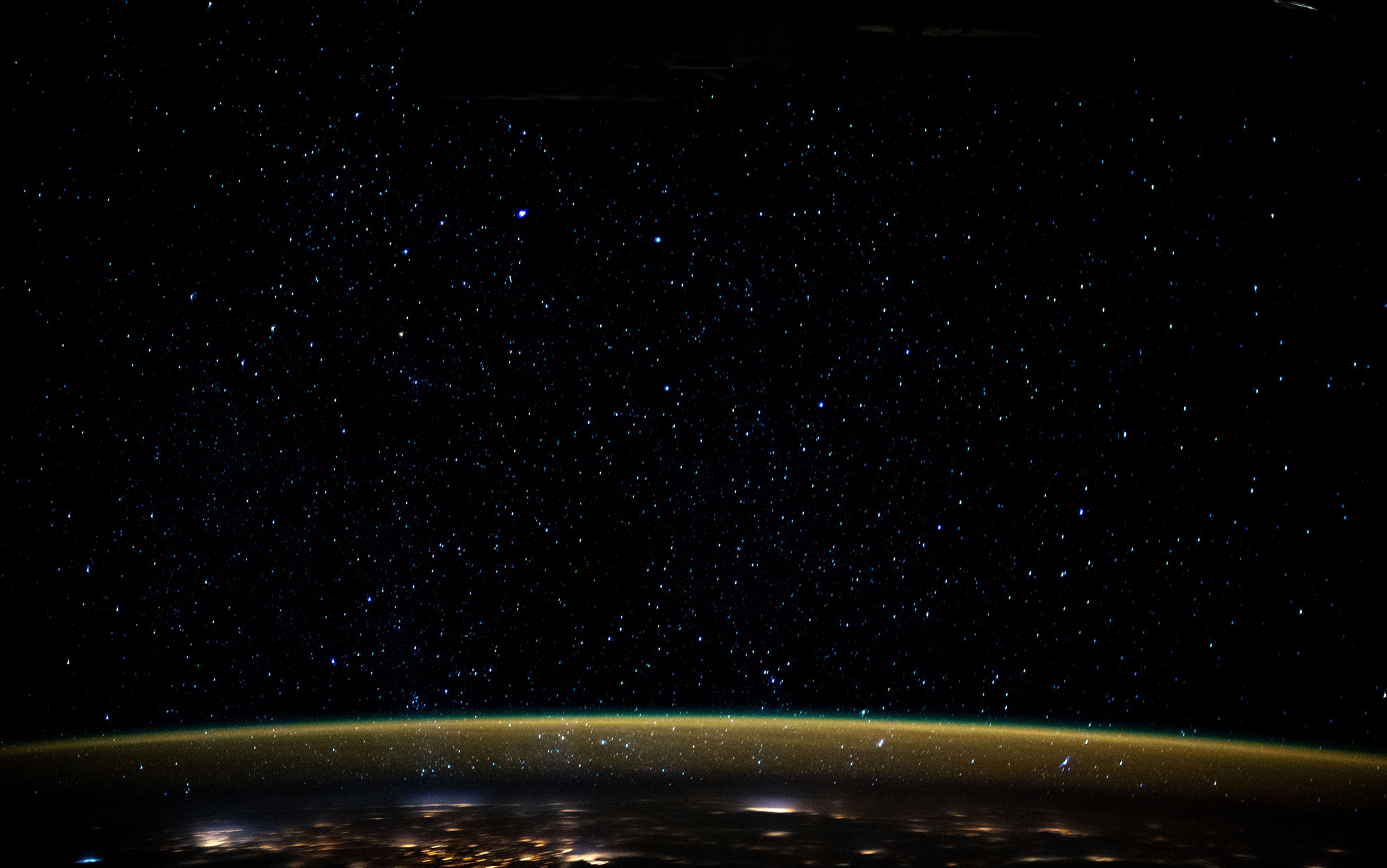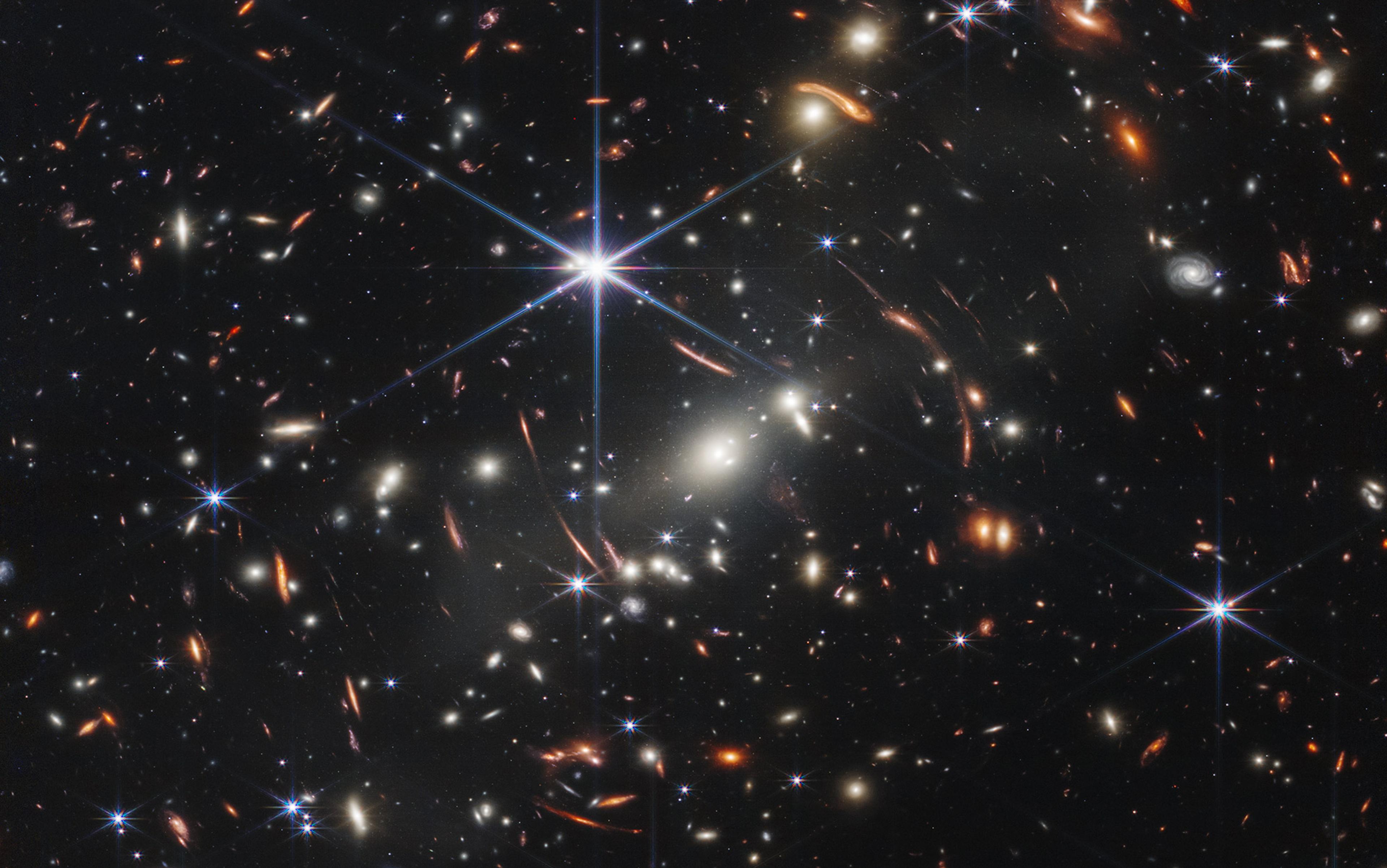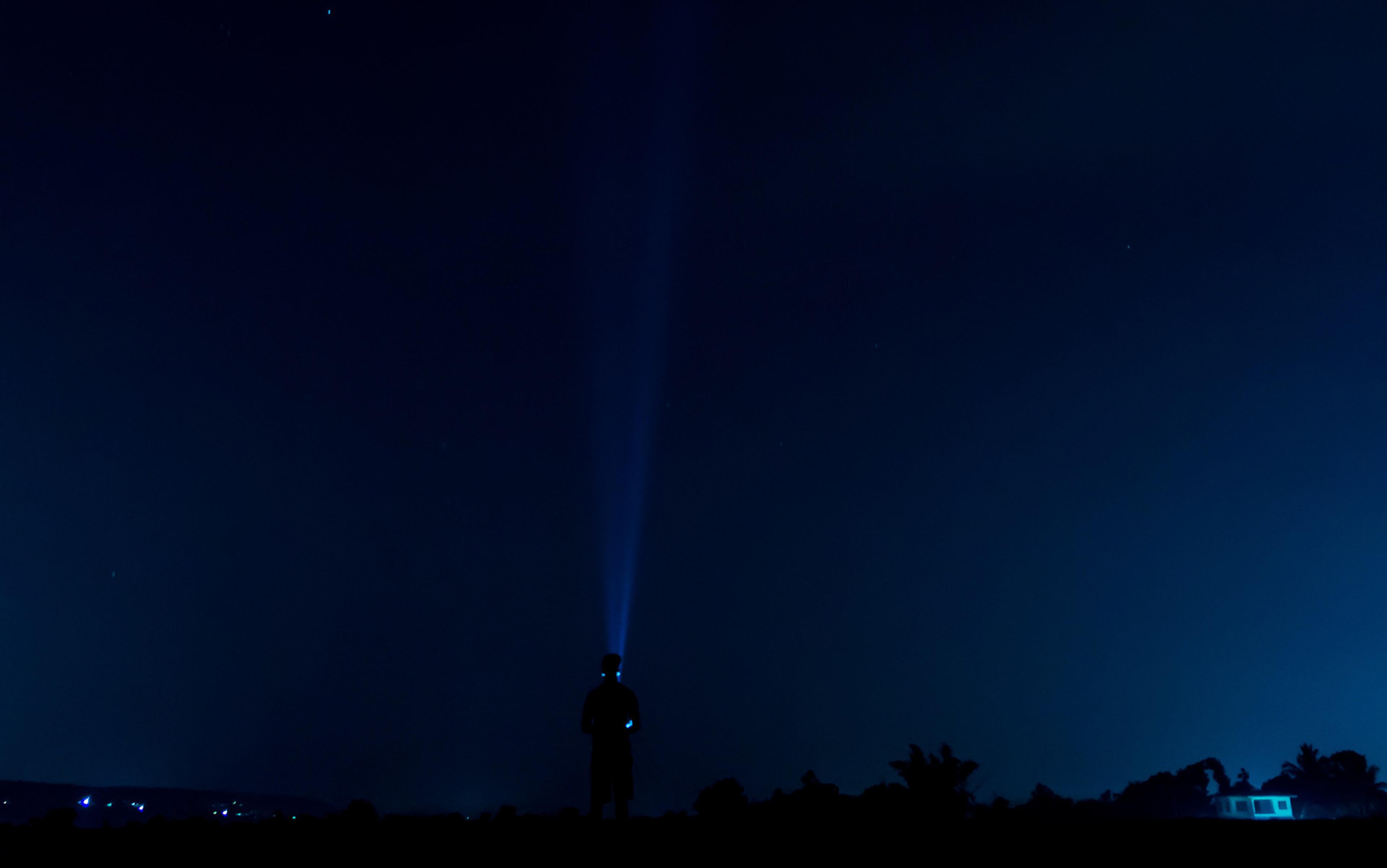I was about 10 years old when I saw the Milky Way for the first time. On holiday in the countryside, blissfully far away from the polluting airglow of city lights, the night sky was like nothing I’d ever seen before. There were more stars, of course, but there was also something wholly new: a vast silvery band of light, arcing across the sky.
For most of human history, the Milky Way was something of an enigma. Different cultures offered up a dizzying variety of folk tales and explanations. There’s the Roman story of a goddess spilling milk across the sky (from which we get our term ‘Milky Way’), and many tales of heavenly rivers in the firmament. My personal favourite is the Cherokee legend, in which a dog stole a basket of cornmeal, leaving a trail behind. The Cherokee call the Milky Way gi li’ ut sun stan un’ yi – ‘the way the dog ran away’.
It was the astronomer Thomas Wright who, in 1750, first described our galaxy as science now understands it: a vast disk of stars, held together by the same gravitational forces that define the Solar System, though operating on incomparably larger scales. Our Milky Way is a large-ish spiral galaxy, made up of around 200 billion stars and stretching 100,000 light years across. If these numbers seem huge to you, you’re not alone: up until the turn of the 20th century, astronomers assumed something so absurdly big must constitute the entire material Universe. So it was a considerable surprise in 1924 when Edwin Hubble demonstrated that our Milky Way is just one tiny corner of a Universe, containing hundreds of billions of galaxies of all shapes and sizes.
Why do galaxies exist at all? Why do the basic laws of nature come together to produce a Universe filled with these ridiculously vast – and incomparably beautiful – structures? Over the past century, astronomers have pieced together much of the picture. In the smooth, uniform, early Universe, tiny quantum fluctuations acted like seeds, growing under the influence of gravity and eventually forming what we know as modern galaxies, those massive, complex and ordered systems of gas, dust and stars. But parts of the puzzle are still missing – and to find the answers, we need to look further afield.
If we ‘zoom out’ from our Milky Way and look at our local cosmic neighbourhood, we start to get a sense of the diverse range of galaxy types. Our ‘Local Group’ of galaxies consists of a veritable galactic zoo, from the large twin spirals of the Milky Way and Andromeda, to the small fluffy-looking Triangulum Galaxy, and more than 50 smaller dwarf and irregular galaxies. Given the galactic diversity on display, you’d be forgiven for assuming that the Local Group provides a pretty good census of galaxy types. But a type of galaxy is missing.
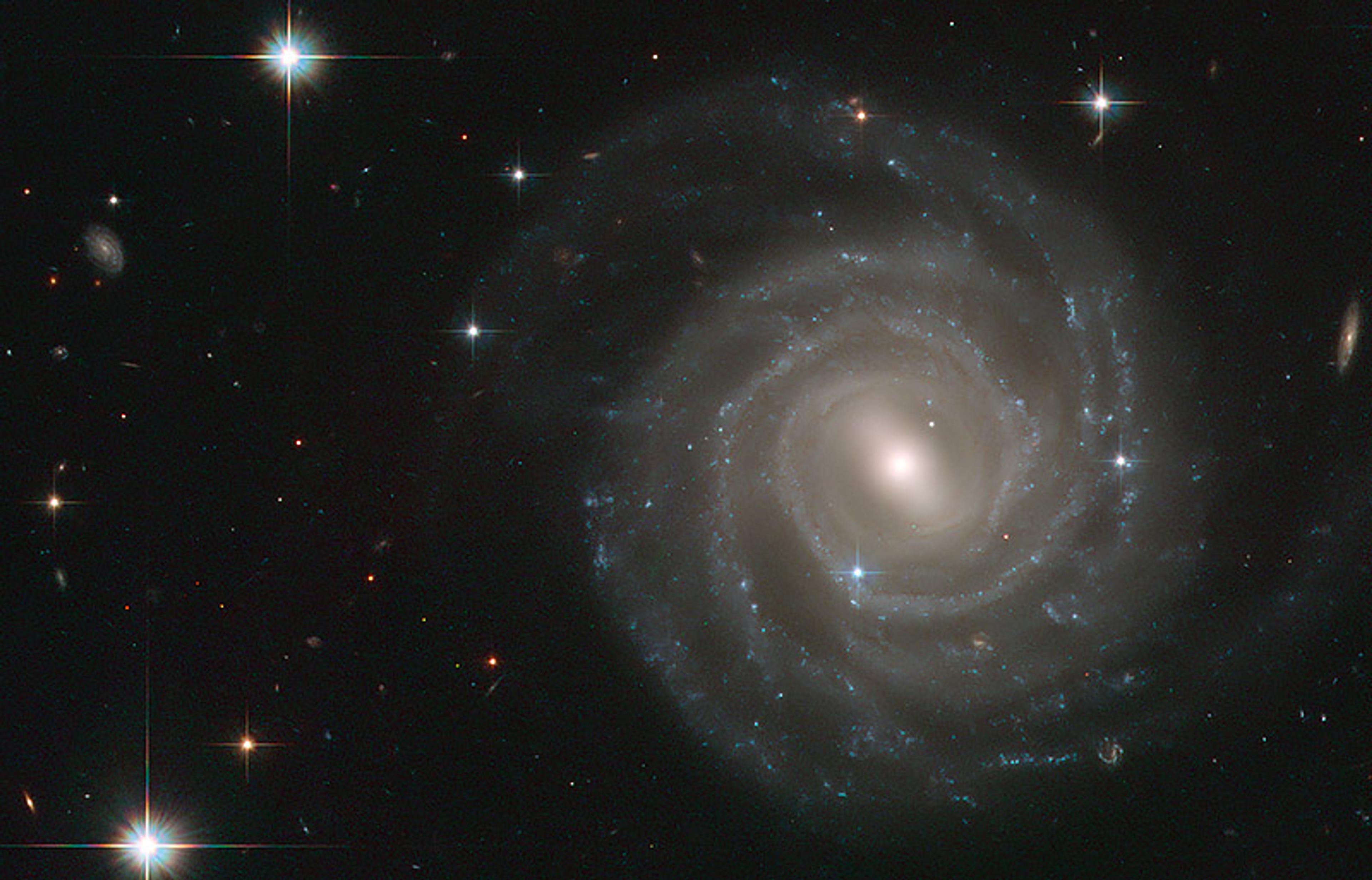
This nearby galaxy, UGC 12158, is probably the closest we’ll get to seeing what our Milky Way would look like from the outside. Courtesy ESA/Hubble & NASA.
The largest galaxies in our Universe are so rare that they don’t show up in our small Local Group. These are the ‘giant elliptical’ galaxies, the biggest of which are behemoths that would dwarf even our Milky Way. The galaxy IC 1101, for example, is millions of light years across – big enough to swallow the Milky Way, Andromeda and all the space between. These giant elliptical galaxies have another unusual property, aside from being so massive: they are all dead.
It might sound strange to refer to a galaxy as being ‘dead’. But this is meant to contrast with galaxies such as those in our Local Group, which are actively forming new stars. Galaxies that create stars (such as our own Milky Way) are full of giant interstellar gas clouds, light-years across, floating through space. These gas clouds are unstable though, and if disturbed – say, by a nearby supernova – they fragment and collapse under their own gravity, turning into stars. Making stars is a perfectly normal process for many galaxies: our own Milky Way makes one or two new stars every year, in places such as the Orion Nebula. But massive elliptical galaxies do not form new stars, and haven’t done so for billions of years. They’re ‘dead’. And, just as a palaeontologist who discovers a fossilised dinosaur can infer that there must have been an extraordinarily massive creature to leave behind such remains, an astronomer who comes across a gigantic dead galaxy can conclude it’s the wreckage of a truly titanic system that lived in the deep past of the Universe. Astronomers have an advantage over palaeontologists, though: we can actually go looking for our dinosaurs. And to do that, we have to look back in time.
Fortunately that’s easier than it sounds – a fact related to the speed of light, which is, as you’d expect, rather fast. A wave of light, after being emitted by a star, will zip through the Universe at a blistering 300,000 kilometres every second. But as absurdly fast as this is, it still does take time for light to move around. Light from the Moon takes around a second to get to Earth, and light from the Sun – about 100 million miles away – travels for eight minutes before reaching us. And just like a letter might take a while in the post (and be ‘old news’ by the time it arrives), light also brings us messages from the past. This is just as true on Earth as it is in space, by the way – when you sit across a table from someone, you are actually seeing them as they were a fraction of a second ago. But over astronomical distances, the time difference can really stack up. Nearby stars might allow us to look back decades, and we see nearby galaxies, such as our nearest neighbour Andromeda, as they were millions of years ago.
A closer look causes a dizzying perspective shift: everything in the image is a galaxy
But even millions of years is small-time stuff, compared with the Universe as a whole. If we want to go looking for our cosmic monsters, living in the deep past, we need to go back billions of years. This means looking very far away indeed.
One of the best images of our distant Universe was taken by the Hubble Space Telescope over 10 consecutive days in 1995. Known as the ‘Hubble Deep Field’, the photo is an exposure hundreds of hours-long of a tiny patch of sky, around one-10th the width of the full Moon. Go and look up the image now – it has to be one of the most awe-inspiring photographs ever taken. At first glance it looks like a starry night sky, but a closer look causes a dizzying perspective shift: everything in the image is a galaxy. Even the faintest red dots, barely visible, are entire galaxies, rendered in miniature by the billions of light-years of intervening space. The most distant galaxies you can see (which are therefore the most ancient galaxies, remember) lived nearly 13 billion years in the past.
At this point, though, our monster-hunting expedition hits a snag. Even an image such as the Hubble Deep Field and its successors, showing thousands of galaxies spanning a vast gulf of cosmic time, doesn’t contain anything remotely extreme enough to be an ancestor of the giant dead galaxies we see in our modern Universe. These ‘red-and-dead’ giant galaxies need to grow somehow, and all those billions of stars being formed should stand out like a cosmic firework show. But there’s nothing in the Hubble Deep Field that even approaches the titanic building project that would be needed to produce a giant galaxy.
So far, so mysterious. The answer to this problem lies in the fact that the Hubble Deep Field, as impressive as it is, is only a small part of the picture. While it showcases galaxies across most of cosmic history, it does so using only ‘optical’ light – wavelengths that we can see with our eyes. But the light we see makes up just a small fraction of the total spectrum. The rest of the spectrum – all the light we cannot see, in other words, from radio waves to high-energy X-rays – tells us about the Universe too. And these other wavelengths can paint a radically different picture of our cosmos.
In 1880, the American astronomer Samuel Pierpont Langley achieved something rather remarkable: he built a piece of equipment capable of spotting a cow at a distance of around a quarter of a mile. This might not sound like a feat destined for the history books, but what made this special was the wavelength of light that he used. Langley had built the first ever ‘bolometer’, a telescope-like heat-detector capable of seeing very long wavelengths of infrared light.
Bolometers were used to study outer space from the very beginning, with Langley himself using his new invention to study the thermal radiation from our Sun. But throughout most of the 20th century, bolometers were limited to single-pixel devices, making it horrendously time-consuming and fiddly to make actual images of anything (imagine having to use a one-pixel phone camera). The big breakthrough came in the 1990s, when scientists discovered how to link multiple bolometers together to make a multi-pixel camera. And these new ‘bolometer cameras’ could then be used to take pictures of the Universe using very long-wavelength infrared light.
It’s no exaggeration to say that this was a revolution in astronomy. These new wavelengths, thousands of times longer than what we see with our eyes, represented an entirely new window through which to view our Universe. One of the first bolometer cameras, an instrument called SCUBA, attached to a telescope in Hawai’i, is second only to the Hubble Space Telescope in the amount of important astronomical research it has produced.
So how does this tie in to the hunt for missing monster galaxies, lurking in the prehistory of the Universe? The answer lies in the fact that long wavelengths of light are good at finding hidden things. Firefighters entering burning buildings now use infrared cameras that ‘see’ in long-wavelength light. These long wavelengths travel easily through dust and smoke, revealing obscured things that would be hidden from our human eyesight. And the same trick works for astronomy, too: observing the Universe at long wavelengths, using a bolometer camera, has the power to make the invisible visible.
And what did astronomers see, when they turned these new cameras skywards? Well, it turned out that the long-wavelength Universe looked like a very alien place, compared with the Universe we know. If you look at a side-by-side comparison of the same patch of sky, one picture taken in optical light and one taken with a bolometer camera, you would never guess that the two pictures have the same subject. What looks bright to our eyes might seem dull and uninteresting in the far-infrared. But the reverse can be true too. The first long-wavelength pictures of the sky revealed a previously invisible Universe: a scattering of blazingly bright galaxies, hidden from normal telescopes, shining out of the dark like great cosmic lighthouses. New galaxies! It was like a magic trick.
Could they be the missing ‘dinosaur’ galaxies that left us with a Universe strewn with ‘red and dead’ giants?
The most exciting thing about these new galaxies, though, wasn’t just that they were previously invisible. It was that they appeared to be an entirely new type of galaxy – a new galactic species. Astronomers have been cataloguing galaxies for hundreds of years, separating them into ‘spirals’, ‘ellipticals’, and so on. But these new galaxies seemed to be an entirely unknown population. This kind of thing would be the discovery of a lifetime for anyone studying the natural world. Imagine being a biologist, putting on a pair of infrared glasses, and coming face to face with a new species previously invisible to our eyes!
The new galaxies were named Sub-Millimetre Galaxies (or SMGs for short – astronomers love acronyms). The ‘sub-millimetre’ bit of their name is a bit misleading, since it calls to mind something minuscule – but in fact the label refers to the wavelength of light used to find them. Despite their miniature-sounding name, SMGs are massive and extreme beasts.
So what are our newly discovered galaxies like? And could these be the missing ‘dinosaur’ galaxies that eventually died and left us with a Universe strewn with ‘red and dead’ giants? There are a number of things we can learn about galaxies – like how far away they are, how big they are, and what they’re made of. It’s also good to know how fast galaxies make stars, which is a way of knowing how fast the galaxy is growing. And whichever way you look at it, this new species of galaxy is a record-breaker. They’re some of the biggest and most faraway galaxies we’ve found, and they’re making stars at a rate that dwarfs every other galaxy ever discovered.
Of course, all galaxies are ‘really far away’ – space is a big place. But the distances to these new galaxies boggle the mind. One well-studied galaxy (that goes by the oh-so-catchy name ‘SMM J123711.86+622212.6’) is around 24 billion light-years away, or 24,000 million light-years. Andromeda, and the rest of our local galaxies, are in our cosmic back-garden by comparison. Being so far away, of course, also means that these galaxies are incredibly ancient; by seeing these galaxies, we are looking back more than 10 billion years into the past. But the real way that these galaxies are exceptional is how efficient they are at making new stars.
As I mentioned before, this is a normal process for most galaxies. A typical nearby ‘starburst’ galaxy, known for churning out stars unusually rapidly, might make a hundred or so new stars per year. But that’s nothing compared with one of these new Sub-Millimetre Galaxies. An SMG can create thousands of new stars per year, making them the most powerful and efficient star factories in the entire Universe. Nothing else comes close. And this is exactly the type of galaxy that would, over the course of billions of years, turn into a red and dead giant. With our new, long-wavelength view into an invisible Universe, it looks like we might have finally found our dinosaurs.
So how did these amazing galaxies remain hidden for so long? If they’re really so extreme, why did our telescopes fail to spot them? The answer sounds surprisingly down-to-Earth: they’re too dusty. Cosmic dust is a sea of tiny, smoke-like particles, containing heavy elements such as silicates and oxides. All galaxies have some dust, which is very good at blocking out light (dust in our own Galaxy is responsible for the dark stripes that pattern the Milky Way). But SMGs have an abundance of dust, a byproduct of all those millions of stars being formed. They have so much dust, in fact, that almost all their optical light is blocked, leaving them invisible to our eyes. But, like firefighters using infrared goggles to search in smoky rooms, our infrared telescopes can now peer through the haze to reveal the hidden monster galaxies within.
There’s still a lot we don’t know about these galaxies. At such extreme distances, billions of light years away, SMGs appear as little more than faint, fuzzy blobs in even our most powerful telescopes. As a result, learning even basic things about them – such as their shape and structure – involves some educated guesswork. Due to the titanic forces at work within them, they must exist as chaotic, whirling maelstroms of gas, wind and light. But whether they mostly resemble ‘scaled up’ versions of galaxies we know well, or whether they are far more alien, we don’t yet know.
These extreme galaxies span the hinterland between knowledge and mystery
We’ve only just passed the 20-year anniversary of knowing that they even exist, so astronomers can be excused for not having the full picture just yet. It’s still not totally clear what forces lie behind such extraordinary star formation: are they powered by two massive galaxies crashing together? Or can gas (the fuel for star formation) pour down onto a galaxy like a great cosmic waterfall, setting off a firework show of new stars? Right now we don’t know the details.
It’s also not fully clear just how these galaxies ‘die’. What transforms them from the vibrant cosmic powerhouses in the distant Universe into the ‘red and dead’ fossils that started our story? The answer might well be hidden in the very cores of these monster galaxies. All massive galaxies, including our Milky Way, have a supermassive black hole in their centre, and SMGs are no exception. It’s thought that interactions between the central supermassive black hole and the wider galaxy can end up stripping the galaxy of gas, quenching the fires of star-creation and setting the galaxy on a course to becoming a ‘red and dead’ relic. But right now, we don’t really understand how SMGs and their black holes interact.
Answering all these questions might need to wait until the next generation of powerful telescopes get built – like NASA’s James Webb Space Telescope, the successor to Hubble, and the futuristic ‘Square Kilometre Array’ radio telescope, both due in the 2020s. It’s often the way in science that our understanding of the Universe advances in step with technology. For objects such as these extreme galaxies – which sit just at the edge of observability and span the hinterland between knowledge and mystery – are some of the most tantalising phenomena of all.
I still love looking at the Milky Way. One of the best things about being an astronomer is being able to visit the darkest skies in the world, and see our Galaxy laid out like an intricate tapestry across the sky. What seized my imagination at a young age was the sense of mystery, and an awe of whatever vast and ancient forces created such a sight. It thrills me that humanity has reached a point where we are beginning to understand these forces, and to see the Universe on its own terms.
